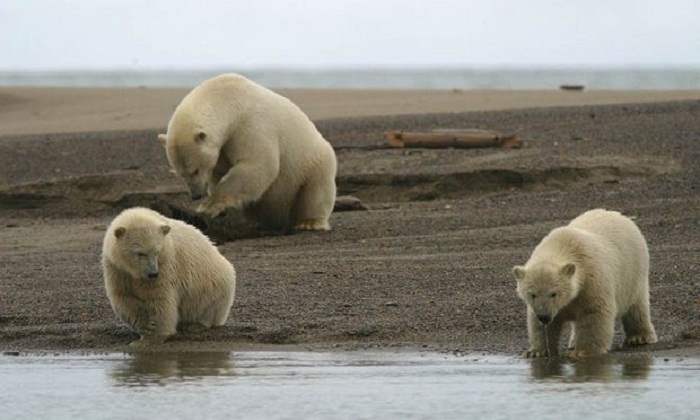The plan announced on Monday calls for reduced greenhouse gas emissions but focuses on action to be taken by the agency on other conservation strategies, such as preventing contamination from spills, protecting dens, or reducing conflicts with humans.
Shaye Wolf, climate science director for the Centre for Biological Diversity, which filed the petition to list polar bears in 2005, called the recovery plan toothless.
The plan, she said, acknowledges polar bears will not survive without cuts in large-scale greenhouse gas pollution. The science in the plan shows the need to keep global temperature rise well below 2C for polar bears to have any reasonable chance of survival, she said.
The agency’s job, she said, is to outline the steps needed to be taken for polar bears to survive. “It acknowledges the problem but fails to put the solution in the core strategy for the bear,” she said.
The agency said addressing increased atmospheric levels of greenhouse gases that result in Arctic warming will require global action. Until that happens, the focus of recovery will be on US wildlife management actions that will contribute to polar bear survival in the interim “so that they are in a position to recover once Arctic warming has been abated”, the plan said.
Dirk Kempthorne, who was secretary of the interior under George Bush, announced in 2008 that polar bears would be listed as threatened under the Endangered Species Act. But he added immediately that endangered species law would not be used to set climate policy or limit greenhouse gas emissions.
More about:
















































